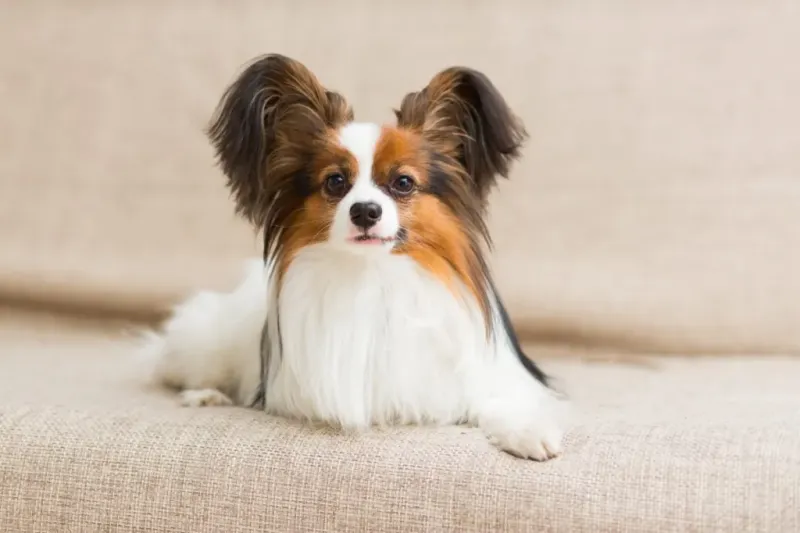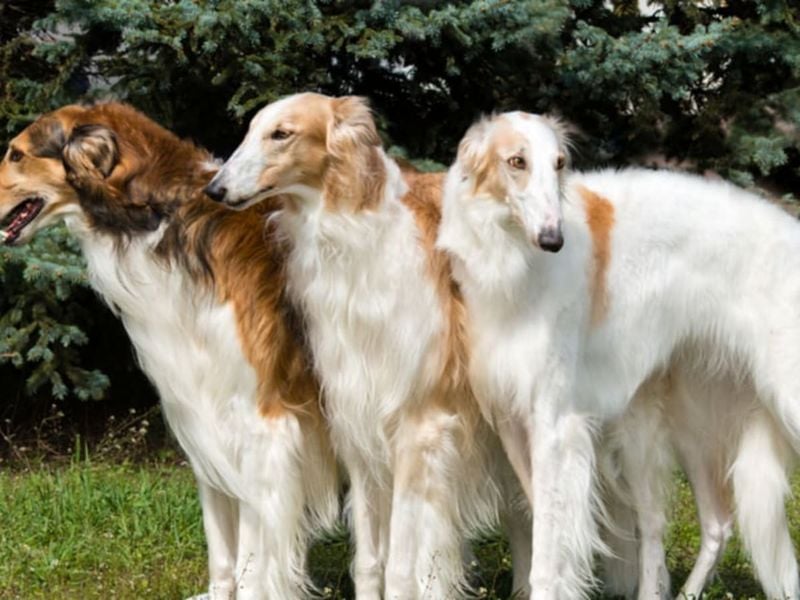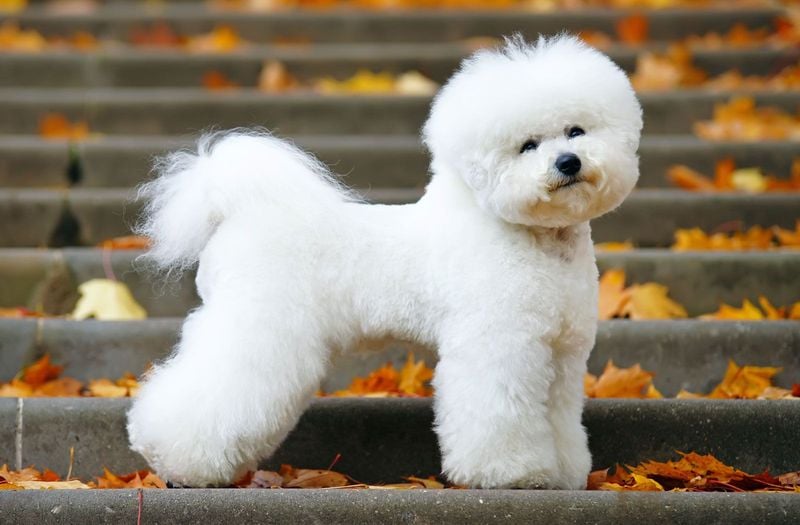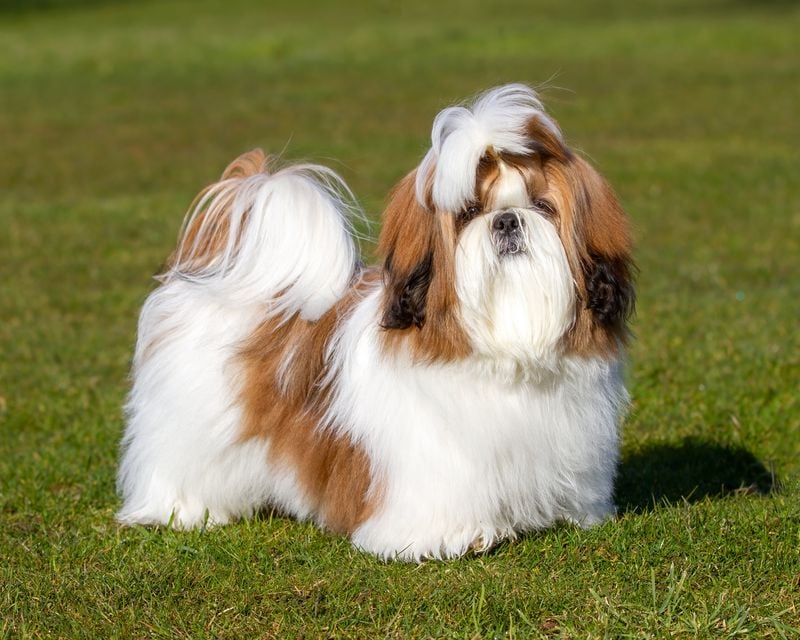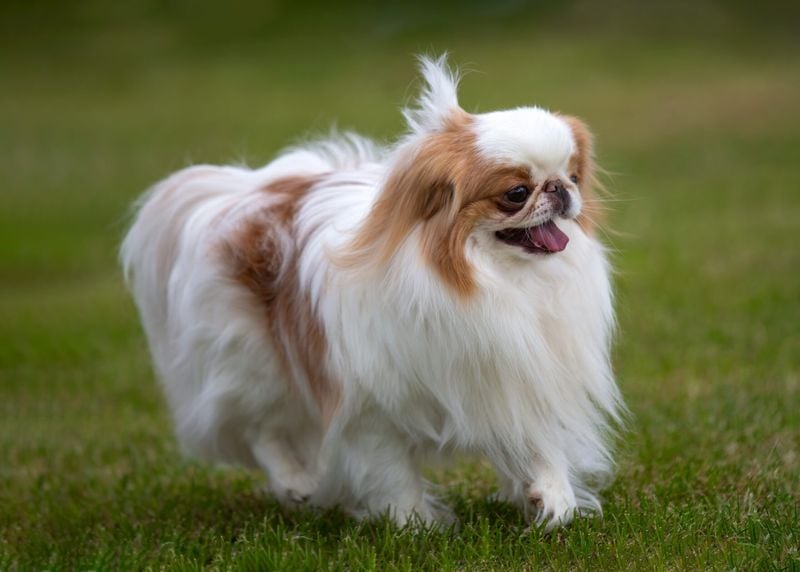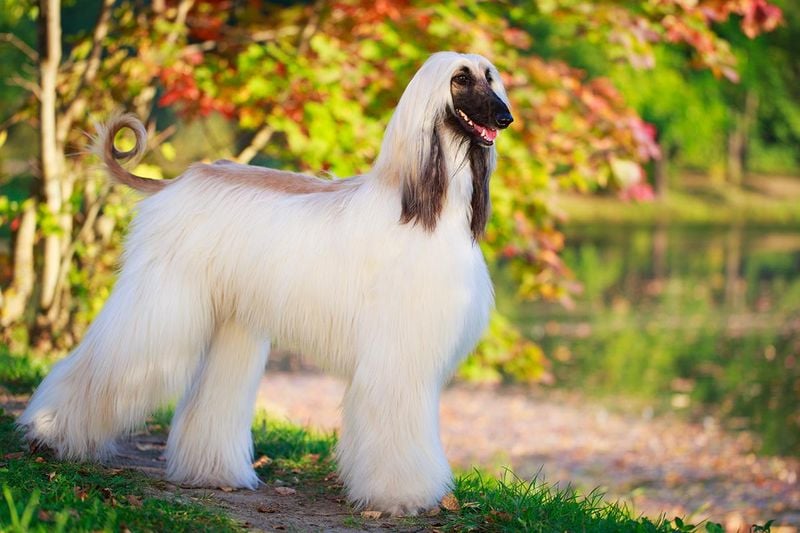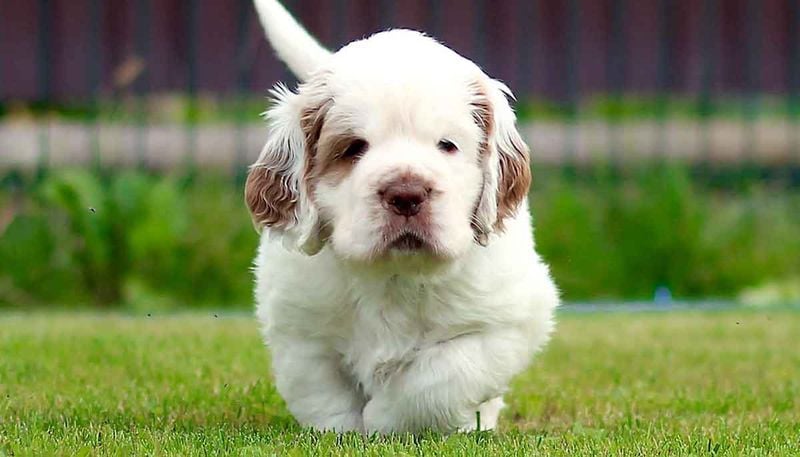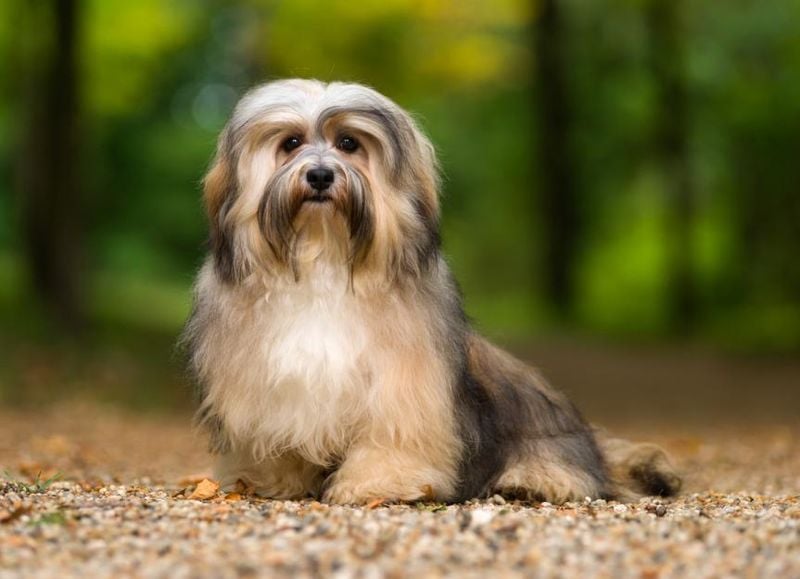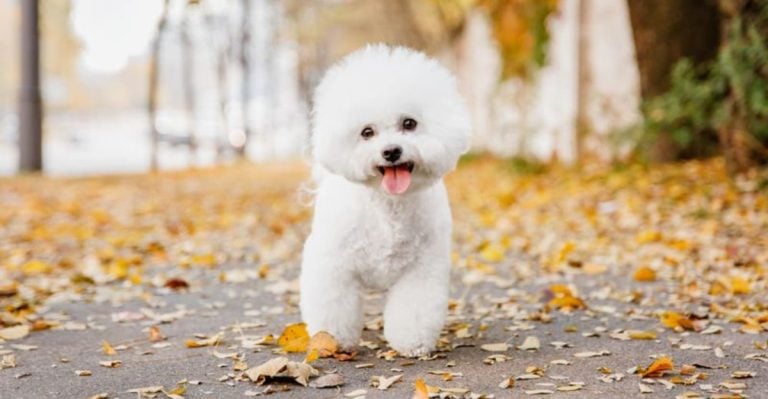15 Royal Companions Who Mix Nobility with Pure Snuggle Power
Throughout history, certain dog breeds have trotted alongside royalty, earning special places in palaces and noble homes worldwide. These aristocratic pups combine their dignified heritage with an incredible capacity for affection, making them the ultimate royal companions. From tiny lap-warmers to majestic guardians, these breeds have perfected the balance between regal bearing and heart-melting cuddles.
1. The Papillon
Sporting their signature butterfly-shaped ears, these tiny nobles were favorites in European courts for centuries. Marie Antoinette reportedly clutched her beloved Papillon while awaiting her fate during the French Revolution.
Despite their delicate appearance, these pint-sized companions possess remarkable intelligence, ranking among the top ten smartest dog breeds. Their alert, friendly nature makes them excellent watchdogs who won’t hesitate to announce visitors.
Behind their royal demeanor lies a playful spirit that loves games and learning new tricks, proving good things truly come in small packages.
2. Borzoi
Favored by Russian aristocracy for centuries, these elegant sighthounds once hunted wolves alongside mounted nobles. Their distinctive silhouette features a narrow head, deep chest, and flowing coat that seems to float as they move.
Under that aristocratic exterior lives a gentle soul with a calm, independent nature. At home, they transform from swift hunters to peaceful loungers who perfect the art of elegant relaxation.
Modern Borzois maintain their dignified bearing while being surprisingly affectionate with their chosen humans, creating an unspoken bond of mutual respect worthy of their noble heritage.
3. Cavalier King Charles Spaniel
Named for the English monarch who adored them, these charming spaniels appear in countless royal portraits throughout history. Their expressive eyes seem to look directly into your soul, creating an instant connection that’s hard to resist.
Affection flows naturally from these companions who genuinely believe their purpose is to love and be loved. Unlike some toy breeds, they maintain a sporting spirit from their spaniel heritage, enjoying moderate outdoor activities between cuddle sessions.
Charles II reportedly issued a royal decree that these dogs must be allowed in any public place, including Parliament – a testament to their irresistible charm.
4. Pekingese
Ancient legends claim these dogs were created by Buddha, who shrank a lion down to dog size. For centuries, only members of the Chinese Imperial court could own them, with theft punishable by death.
Beneath their luxurious lion-like mane beats the heart of a dignified companion who knows their royal worth. Their distinctive flat faces and rolling gait give them a unique presence that commands attention despite their small stature.
Fiercely loyal to their chosen people, these independent thinkers aren’t afraid to assert their opinions, carrying themselves with the confidence of creatures who once slept in the sleeves of Chinese empresses.
5. Bichon Frise
Resembling animated cotton balls, these cheerful charmers sailed with Spanish sailors before capturing the hearts of Renaissance nobility across Europe. Their name roughly translates to “curly lap dog,” perfectly describing both their appearance and preferred location.
Renaissance paintings often feature these fluffy companions alongside their aristocratic owners, testament to their enduring appeal among the elite. Their naturally happy disposition makes them experts at brightening even the gloomiest castle day.
Remarkably adaptable, these powder-puff pals maintained their royal connections through centuries of European history while developing a talent for circus performances during less fortunate times.
6. Great Pyrenees
Majestic white giants who once protected French castle grounds and royal flocks from wolves and bears. King Louis XIV named them the Royal Dog of France in the 17th century, cementing their noble status.
Winter weather only enhances their joy, as their thick double coats were designed for snowy mountain conditions. Despite their imposing size, they move with surprising grace and gentleness, especially around children they consider part of their flock.
Historically trained to make independent decisions while guarding livestock, these thoughtful companions possess a calm confidence and natural protectiveness that makes family members feel secure in their presence.
7. Standard Poodle
Far from being mere fashion accessories, these intelligent athletes served as retrieving dogs for European nobility for centuries. Their distinctive haircuts originated as practical designs to protect vital organs while swimming in cold water, not as decorative statements.
Considered among the most intelligent dog breeds, they excel at everything from hunting to circus performances to therapy work. Louis XVI of France so adored his Poodles that they reportedly had their own servants and personal chefs at Versailles.
Beneath those sophisticated curls lies an attentive companion with a keen sense of humor and remarkable ability to read human emotions.
8. Shih Tzu
Treasured by Chinese emperors as living, breathing good luck charms, these “little lion dogs” were considered so precious they weren’t sold or traded but only given as extremely special gifts. Dalai Lamas believed them to be sacred companions housing the souls of monks who weren’t quite ready for reincarnation.
Bred specifically to be charming companions rather than working dogs, their entire purpose is human connection. Their flowing double coats require regular grooming, a tradition dating back to imperial times when court ladies would spend hours tending to their precious pets.
Surprisingly sturdy despite their ornamental appearance, they carry themselves with the confidence of creatures who once sat on silk cushions in forbidden palaces.
9. Japanese Chin
Believed to have been bred by Buddhist monks as gifts for Japanese nobility, these delicate companions were once so valuable that the common people would bow to them in the street. Their distinctive flat faces and large, wide-set eyes give them an almost cat-like expression of perpetual surprise.
Watching a Chin move is like observing flowing silk, with their light-footed, elegant gait developed through centuries of palace living. Remarkably sensitive to their owners’ moods, they seem to possess an almost telepathic ability to know when comfort is needed.
Ancient Japanese artwork frequently depicts these royal companions being carried in the wide sleeves of noble ladies’ kimonos.
10. Afghan Hound
Draped in silky, flowing coats that would make any royal jealous, these ancient sighthounds once raced across desert landscapes for Middle Eastern nobility. Their distinctive silhouette appears in Egyptian papyri dating back thousands of years, making them one of the oldest identified dog breeds.
Beneath that glamorous exterior lies an independent spirit with the dignified aloofness of true aristocracy. Unlike more overtly affectionate breeds, they offer their loyalty with subtle grace, forming deep but respectful bonds with their chosen people.
Pablo Picasso was so captivated by their elegant form that his Afghan Hound named Kabul became his artistic muse and treasured companion.
11. Irish Wolfhound
Mentioned in Roman records as early as 391 AD, these towering hounds were so prized by Irish nobility that wars were fought over them. Ancient Irish law allowed only kings and nobles to own these majestic hunters, who could take down wolves and elk with equal skill.
Despite their hunting prowess, they developed into surprisingly gentle souls with a calm, dignified demeanor. Their impressive size – often standing over 30 inches at the shoulder – belies their sensitive nature and fondness for leaning against their favorite humans.
According to legend, an Irish Wolfhound named Gelert sacrificed his life to save a prince’s baby from a wolf, demonstrating their legendary loyalty.
12. Newfoundland
Revered for their water rescue abilities, these massive yet gentle swimmers became favorites of European nobility after saving Napoleon Bonaparte from drowning. Their waterproof double coats and webbed feet make them natural lifeguards, capable of pulling drowning victims to safety even in icy waters.
Lewis and Clark brought a Newfoundland named Seaman on their famous expedition, where he protected the camp from wildlife and helped retrieve game. Their incredible strength allows them to pull small boats to shore and carry heavy loads, yet they handle delicate objects with surprising gentleness.
Queen Victoria’s beloved Newfoundland, Hector, was immortalized in paintings and reportedly had his own suite at Windsor Castle.
13. Tibetan Spaniel
Perched atop monastery walls, these small sentinels served as lookouts for Tibetan monks for over 2,000 years. Buddhist traditions considered them living prayer wheels, spreading blessings wherever they went.
Often exchanged as gifts between monasteries and royal houses throughout Asia, they were never sold but only given as expressions of profound respect. Their expressive faces feature a slight underbite that creates what enthusiasts call their “sweet smile,” complementing their thoughtful, almost human-like gaze.
Despite their small size, they carry themselves with remarkable dignity, maintaining the watchful alertness that once protected sacred Buddhist texts from intruders in the Himalayan mountains.
14. Clumber Spaniel
Developed by the Duke of Newcastle in the late 18th century, these stocky, powerful spaniels became favorites at royal hunting parties across Britain. Their distinctive white coats with lemon or orange markings made them easy to spot in the field while flushing game for aristocratic hunters.
King Edward VII and his son George V were devoted Clumber enthusiasts, keeping large kennels of these methodical hunters at Sandringham Estate. Unlike more energetic sporting breeds, they hunt with a thoughtful, deliberate approach, using their substantial noses to track game through dense undergrowth.
At home, they transform into easygoing companions with a dry sense of humor and talent for finding the most comfortable spot in any room.
15. Havanese
Originally the pampered companions of Cuban aristocracy, these charming little dogs were among the few possessions wealthy families managed to save when fleeing Castro’s revolution. Their name comes from Havana, where they were treasured by the city’s elite for centuries.
Blessed with a natural talent for circus tricks, they entertained royal courts across Europe after being discovered by traveling Europeans. Their distinctive springy gait gives them a joyful bounce that perfectly matches their playful personalities.
Remarkably adaptable, they transitioned from pampered palace life to becoming beloved family companions without losing their cheerful outlook or natural ability to make friends wherever they go.

